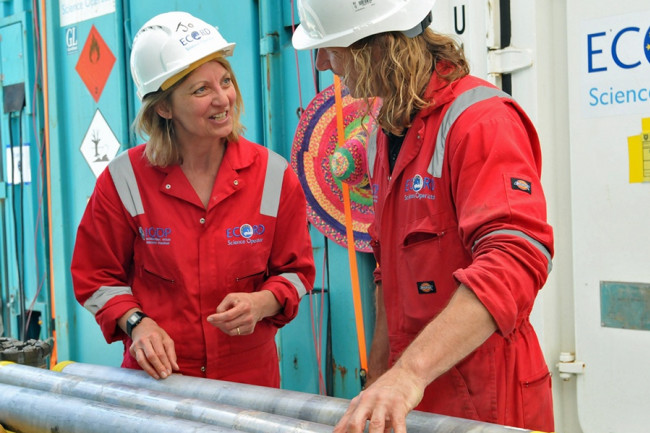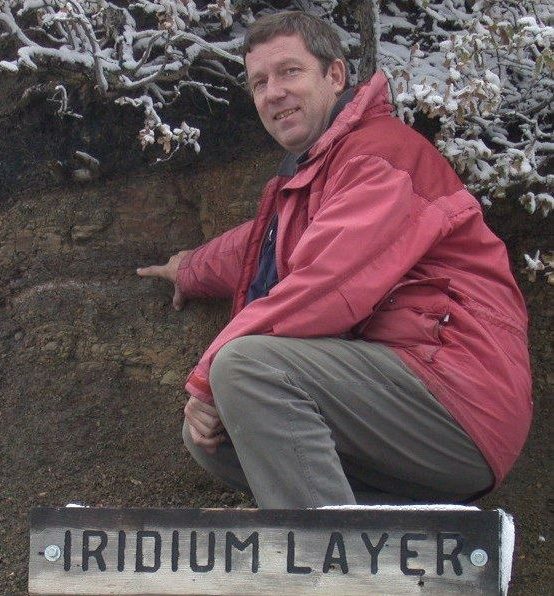By Cindi Sirois Collins

In 2016, Dr. Joanna V. Morgan (left) of the Imperial College of London and Dr. Sean P. S. Gulick (right)of the University of Texas’s Institute for Geophysics and the Jackson School of Geosciences along with the scientists of the International Deep Drilling Program (IODP)- Expedition 364 went to the Chicxulub (CHICK-zhoo-loob) crater in the Yucatan Peninsula of Mexico. This group of scientists took core samples of the peak ring created by the liquifaction of rock from the impact of a colossal asteroid. The crater is named after the nearby Mexican village means “tail of the devil” in Mayan.
These core samples were C-T scanned and studied in many ways to come up with the following conclusive evidence down to the first minutes after the asteroid created the impact crater about 66,043,000 years ago– plus or minus 10,000 years (Sprain, et al., 2015) and it is the largest and best-preserved single event-deposit found on Earth so far.

These scientists along with respected Dutch geologist, Dr. Jan Smit drilled and collected core samples of the Chicxulub crater’s center peak ring to about 1335 feet (406 m). This is the first time a peak ring has been drilled and sampled.
In 2019, Dr. Sean Gulick and the Expedition 364 scientists recorded the results and the contributions of those studies in the professional paper “The First Day of the Cenozoic” (Gulick, et al., 2019). The following articles contain some of the highlights of this iconic study.
The video above is the “baby pool” version of this incredible research. Visit the following site for the deeper and interesting version. Life and Death by Impact: Drilling for clues with Sean Gulick https://www.youtube.com/watch?v=RQJRQC7yQ4w
Coming Next: Minutes to Weeks After Impact
